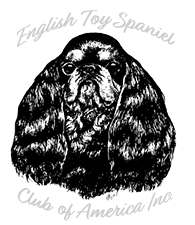Interestingly, Susannah’s husband, B.F. {Benjamin Frederick} Wilson [1830-1896], a native of Denbighshire, Wales, became a prominent citizen and businessman in Pittsburgh and is well-known in the annals of English Setter history in the United States as the owner of the great progenitor, Count Noble [1879-1891]. Count Noble was imported from England in 1880, where he was bred by Richard Llewellin Purcell Llewellin [1840-1925] of Willesly Hall, Ashby-de-la-Zouche, Leicestershire. A large painting by Edmund Henry Osthaus [1858-1928] of this famous field and bench champion setter hangs as a prized gem in the fine collection of the Duquesne Club in Pittsburgh, where B.F. Wilson was a member and rubbed elbows with Andrew Carnegie, Andrew Mellon, Henry Clay Frick, Henry Oliver, George Westinghouse, and other gentlemen of great wealth and status in the Iron City. Upon his death, an obituary for the great Count Noble was published in The New York Times on Jan. 21, 1891. The obituary reports that Count Noble was “a ten-thousand-dollar setter dog”, an enormous sum of money in those days. The celebrated sire of many field and show champion setters, the body of Count Noble was preserved and is currently on exhibit at the National Gun Dog Museum in Grand Junction, Tennessee.
“OUR IGNORANCE OF HISTORY CAUSES US TO SLANDER OUR OWN TIMES.” [Gustave Flaubert, French novelist, 1821-1880]
It may be of interest to consider that in the year 1886:
*Grover Cleveland was in office as the 22nd US President.
*There were only 38 states.
*Victoria was Queen of the United Kingdom of Great Britain and Ireland and the Empress of India.
*Women could not vote and had only cursory legal privileges.
*On May 1st, American workers in numerous cities went on strike demanding a limit of 8 hours to the work day.
*The electrification of the US had barely begun with the opening of two A.C. {alternating current} power plants, serving parts of Boston and Buffalo.
*On October 28th, President Cleveland dedicated the Statue of Liberty, a gift from France to the American people.
*Karl Benz successfully drove the first experimental automobile in Karlsruhe, Germany.
To say it was a very different world in 1886 from today is to understate the amazing advances in technology and medicine, not to mention the changes in social customs, in a relatively brief period of 125 years.
Though somewhat rare in the United States today, the English Toy Spaniel was a popular, well-known breed during the Edwardian Era, the reign of King Edward VII [reigned after Queen Victoria, from 1901-1910]. More broadly known as “La Belle Epoque”, either term is often used to generally refer to the years from about 1890 to 1914, just prior to World War I. It should be mentioned here that in 1903, King Edward VII intervened personally with the Kennel Club [of the United Kingdom, attempting to rename and catalogue the breed generically as Toy Spaniels] to ensure that the breed officially retain its historic name “King Charles Spaniel” in his realm. Around the turn of the 20th century, many English Toy Spaniels were imported by wealthy Americans. The only method of travel and importation at this time in history required a long ocean voyage, which brings us to the woeful story of the most luxurious ocean liner and acclaimed marvel of shipbuilding the world had ever seen, the R.M.S. Titanic.
“WE ARE ALL PASSENGERS ON THE TITANIC.”
[Jack Foster, Irish philosopher]
On April 14, 1912 at 23:40, the R.M.S. Titanic, en route to New York, struck an iceberg in the North Atlantic, disappearing into the sea at 2:20 on the morning of April 15, 1912. Tragically, 1,517 lives were lost. There is some confusion and disagreement about the dogs lost or surviving the Titanic disaster. We do know there was at least one English Toy Spaniel on the ill-fated ship. The family of prominent Philadelphian William Ernest Carter, traveling as first class passengers, had acquired two dogs which are listed in the embarkation log, boarding at Southampton, England. The first dog is specifically identified as a King Charles Spaniel. Presumably the second dog the Carters were importing was also a King Charles Spaniel but its breed is not specified beside the entry. Both dogs were lost in the disaster. Mrs. Lucile Polk Carter, aged 36, daughter Lucile, aged 14, and son William II, aged 11, were rescued by the RMS Carpathia from lifeboat # 4. Their maid, Miss Auguste Serreplan, aged 30, native of France, was also rescued in lifeboat # 4. Mr. Carter remained on board but escaped in one of the last collapsible lifeboats being released and which was not filled to capacity. Mr. Carter’s valet, Alexander Cairns, aged 28, native of Perthshire, Scotland did not survive. Charles Aldworth, aged 30, Mr. Carter’s chauffeur traveling in second class also perished. After traveling through dangerous ice fields, the Carpathia arrived at the scene, rescuing 706 survivors.
